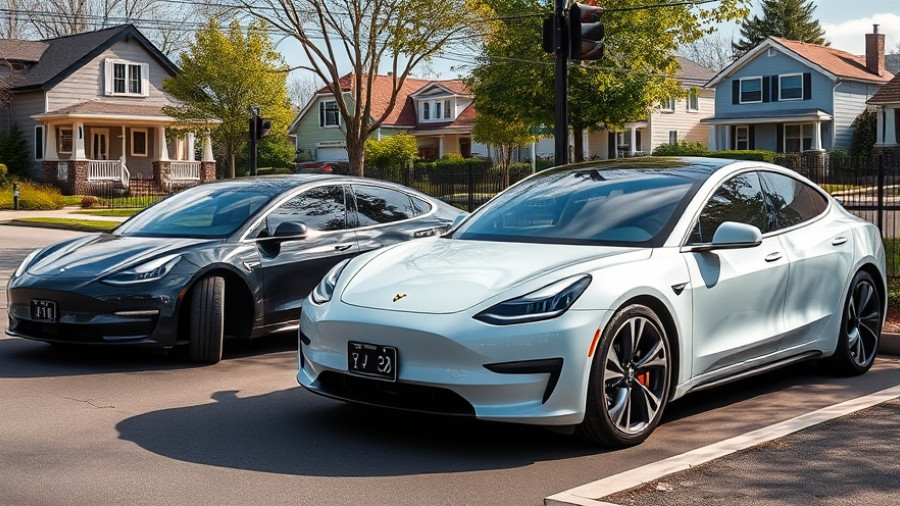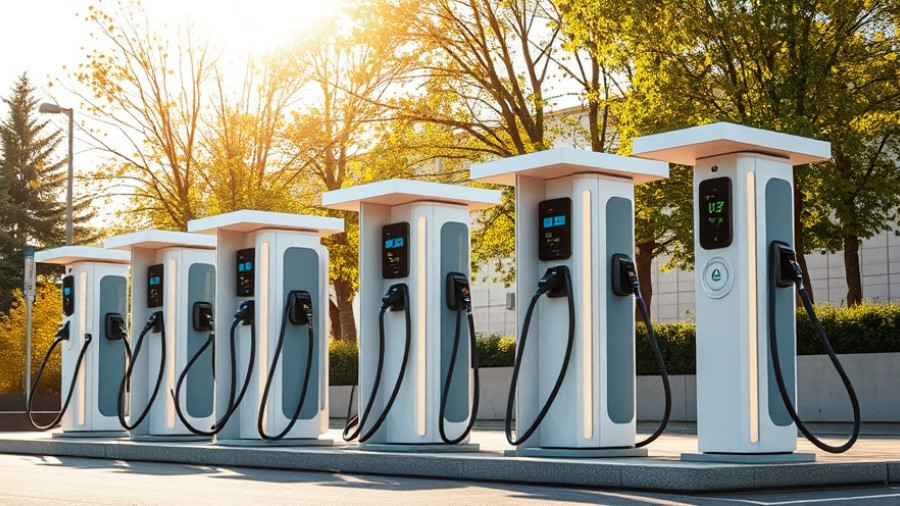
Brussels Sets the Standard: The First Emission-Free Capital
Bpost has officially transitioned to an emission-free delivery service in Brussels, marking a significant milestone in the global effort for greener logistics. As the first European capital to implement an entirely emission-free last mile, Brussels is paving the way for other cities to follow suit.
Switching to electric delivery vehicles, e-bikes, and foot deliveries, bpost's new strategy is not just about reducing carbon footprints but also about creating a healthier urban environment. This innovation mirrors a growing environmental trend among urban centers aiming to enhance air quality and reduce noise pollution—a necessary evolution for a modern city.
Innovative Logistics Models: Bridging Sustainability and Efficiency
The success of bpost's initiative highlights collaborative efforts among various stakeholders, including local government bodies and academic institutions, to create a seamless, emission-free logistics model tailored to Brussels’ dense urban structure. According to Karin Enzlin, Head of Sustainability at bpost, the initiative proves that sustainable logistics can coexist harmoniously with high-performance operations, showcasing a comprehensive approach to address both environmental and societal needs.
This logistical evolution inherently pushes the boundaries of traditional delivery systems, making it imperative for other businesses and municipalities to adopt similar strategies. The partnership with Innoviris and Vrije Universiteit Brussel has been pivotal, as they provided essential insights into consumer behaviors and preferences to inform the initiative's design and implementation.
Environmental Impact: Not Just Numbers, but Lives
Statistics reveal the tangible benefits of the emission-free delivery system. Bpost anticipates a reduction of 750 tons of CO2 emissions annually due to the extensive use of electric vans and bikes. Moreover, the adaptation of chargeable delivery vehicles across the city—a fleet consisting of 565 electric vans and 57 e-bikes—demonstrates a commitment to innovative transport solutions.
Beyond emissions, improved air quality translates into better health outcomes for Brussels residents. With features like over 350 strategically placed pick-up points, the inconvenience of missed deliveries is minimized, thereby encouraging more efficient collection and reducing unnecessary transportation operations that contribute to congestion and pollution.
Challenges Ahead: Emission-Free Deliveries in the Broader Context
While Brussels celebrates this achievement, it's essential to recognize that emission-free deliveries currently represent only 14% of all parcel deliveries across Belgium. This stark statistic underscores the challenges faced on a national level, where traditional delivery methods still dominate the logistics landscape, highlighting the necessity for broader policy reforms and incentives.
Insights from Professor Koen Mommens from Vrije Universiteit Brussel emphasize that moving towards sustainability entails more than just technological advancements; it requires cultural shifts toward more conscious consumerism and collaborative effort across various sectors. These shifts are integral as they determine how quickly and effectively such initiatives can expand throughout Belgium and beyond.
Future Trends: The Road Ahead for Sustainable Logistics
The embrace of emission-free last-mile delivery models will undoubtedly inspire other cities to innovate environmentally friendly solutions in their logistics strategies. Coupled with growing public awareness regarding sustainability, this could lead to broader acceptance and implementation of similar initiatives.
As Brussels leads, larger questions arise for cities worldwide: What are the best practices for creating sustainable urban logistics? How can legislation support a swift transition to emission-free delivery systems? These questions are vital for governments, businesses, and citizens alike, as they work together to sculpt cities conducive to both economic vitality and environmental stewardship.
Call to Action: Joining the Green Movement
To continue this momentum, it is crucial for homeowners and businesses interested in sustainability to rethink their practices. Integrating solar energy solutions and electric vehicles into daily operations can bring about significant environmental benefits. Collaborating with local initiatives, engaging in community programs aimed at promoting cleaner logistics, and advocating for eco-friendly policies can collectively contribute to a more sustainable future.
In essence, as bpost demonstrates with its ambitious milestone, the commitment to an emission-free future is not just a path forward; it is an investment in the health of our communities and the planet.
 Add Row
Add Row  Add
Add 



Write A Comment